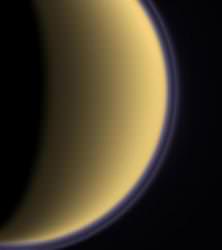Over the last few years, biologists have been continuously surprised at life’s ability to survive in extreme environments: in freezing and boiling temperatures, deep underground, and at the bottom of the ocean around geothermal vents. The common ingredients are liquid water, carbon, and an energy source. But in a new research report developed by the National Research Council, entitled The Limits of Organic Life in Planetary Systems, a multidisciplinary team of scientists investigated alternative ways that life could exist and even thrive.
Life that would be completely alien to the processes we have here on Earth.
The assumption about the search for life in the Solar System is that it would share certain traits in common with life “as we know it”. That means liquid water as a solvent, so that organic molecules can interact in solution. Animal metabolism would require carbon to provide energy storage, chemical reactions and the creation of structures.
But according to this paper, water isn’t the only biosolvent that life could use. In fact, it’s not even the best one. For example, on Saturn’s frigid moon Titan, liquid ammonia could act as a solvent. Non-carbon-based molecules could serve the functions of storage, structure and chemical reactions.
This paper suggests that researchers should expand their understanding of what forms life could take here on Earth, as well as the environments that it could exist in. It also encourages space mission designers to make their experiments more flexible, able to detect unusual life processes, instead of the plain old water/carbon life we’ve got here on Earth.
You can read the press release here, or download the entire report as a PDF file or read it online. Don’t worry, it’s really well written and very accessible to most readers, just scan past the pages of organic molecules and enjoy the writing.

